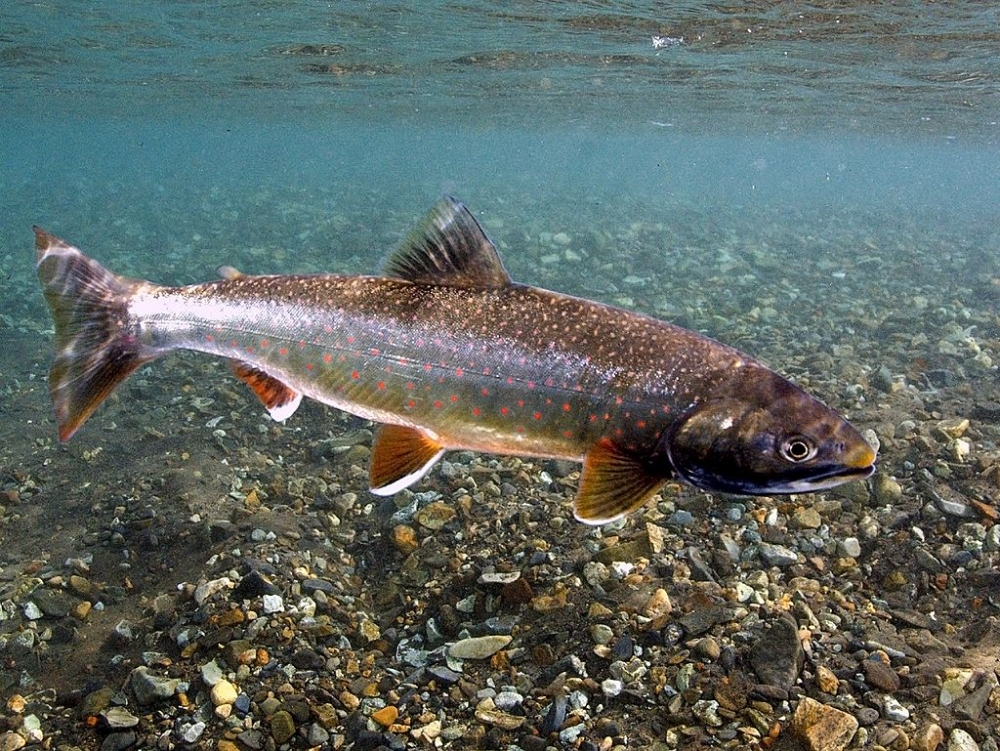
Something Fishy

Little did Charles Dickens know when he penned “Barnaby Rudge” in 1840 that the name of his character Dolly Varden would spawn the moniker for a red-spotted trout. Following the book’s publication, a “Dolly Varden”came to describe a dress of sheer muslin worn over a bright petticoat. Years later, when the distinctive spots of Salvelinus malma, a distant relative of salmon, brought to scientists’ minds that familiar fabric pattern, a new name for the fish was born.
“The northern Dolly Varden is astoundingly good-looking,” said UC Santa Barbara ichthyologist Milton Love of his favorite arctic fish. “They’re just gorgeous animals with big, beautiful spots on their bodies.”
Now, Love is a co-author on a new catalog of Arctic fish species, which provides an unprecedented look at the Arctic food web. The report, which describes 109 marine fish species from the Chukchi and Beaufort seas and offers information relating to fish biology, locations and effects of climate change, will help guide future research and management decisions.
Written with Lyman Thorsteinson, an emeritus scientist with the U.S. Geological Survey (USGS), “Alaska Arctic Marine Fish Ecology Catalog: Beaufort and Chukchi Seas” is a major synthesis and compendium of biological information about the marine fishes occurring in the U.S. Arctic. The study, whose area includes U.S. marine waters north of the Bering Strait, focuses on new information collected since the publication of “Fishes of Alaska” in 2002.
The research summarizes what is known about the natural history of each species and explores the adaptations and limitations of fish populations in Arctic environments. The updated marine fish inventory includes 20 newly confirmed species and 104 new descriptions, complete with distribution maps, life cycle schematics and other useful information, data that will be useful in directing future research needs. The information can also be used by natural resource managers to identify high-priority marine fish species with respect to conservation and environmental decisions and policies.
“Alaska’s rapidly changing climate is affecting the region’s ecology and economic opportunities in the Arctic,” Thorsteinson said. “The physical and biological qualities of hospitable marine habitats are developing in warming Arctic waters and — with respect to human developments — previously ice-covered areas are opening and becoming accessible to new exploration.”
Priority species include those that are used in subsistence activities or that are important to the functioning of marine ecosystems. For example, salmon, whitefish and char — valued subsistence resources — are seasonally important to the food security of many Alaska native communities. Although of lesser subsistence value, the Arctic cod, the most abundant marine fish in the Chukchi and Beaufort seas, is a major prey of birds and marine mammals in the region.
“Arctic cod is the linchpin fish species for the entire Arctic, not just off Alaska but much of the Arctic,” said Love, a research biologist at the Marine Science Institute. “It’s an open question about whether the species needs ice and if there was no ice in the Arctic, whether it would do well. There’s some evidence that its early life stages may depend on being near the ice pack, and if the ice pack gets smaller and smaller and melts earlier and earlier and further and further away from shore — which is what it’s doing — then what will that do to the population of this really critical species?”
Regional food webs are short and the Arctic cod, a mid-level consumer, is considered a keystone species because it provides a major energy link between zooplankton and higher-level consumers. Given the Arctic cod’s food web significance, a novel spatial analysis was used to investigate climate-warming effects on this species and a major competitor, the saffron cod. The results suggest likely northerly shifts in the distributions of both species and varying population effects. For saffron cod, the potential distributional shift would represent an expansion in geographic range; the Arctic cod, meanwhile, would experience a constriction.
“Emphasis on biological and ecological research objectives distinguishes this research from other zoogeographic studies, which tend to be more focused on taxonomy, distribution and species identification,” Thorsteinson said. “It’s an important reference for those interested in Arctic fishes. Because the population dynamics of these species are largely unknown, existing information about the life history traits of species and groups of species are currently important for their management and Arctic policymaking.”



